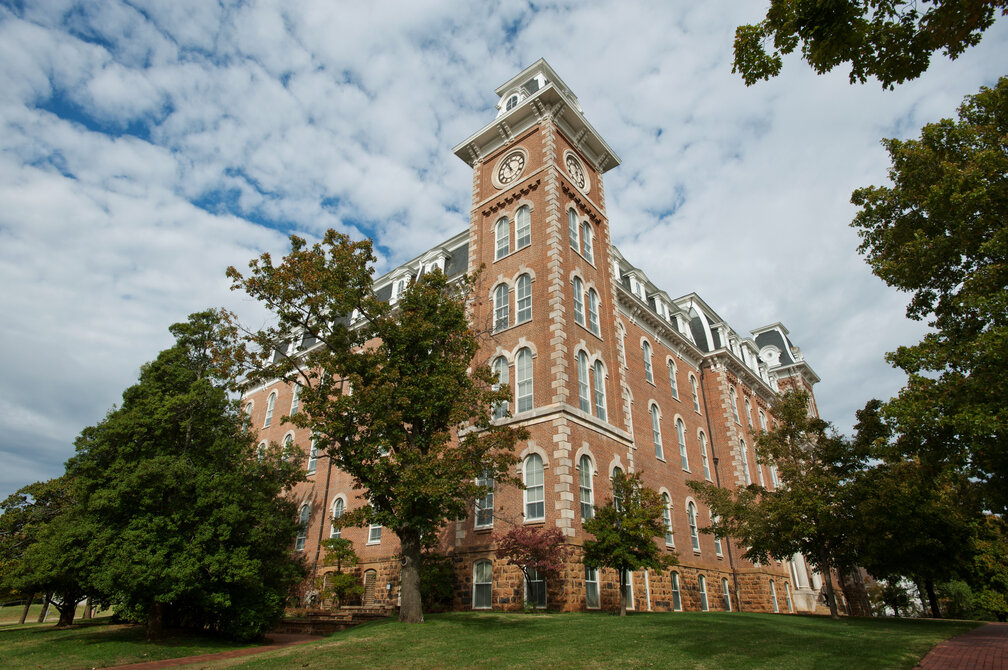America's Richest Family Makes Another Big Gift to its Hometown School, This Time for Research
/The Old Main clock tower at the University of Arkansas. Natalia Bratslavsky/shutterstock
The Walton Family Charitable Support Foundation—aka, the other Walton foundation, not the Walton Family Foundation—doesn’t have much of a public profile, but it isn’t exactly hiding, either. High-dollar philanthropy coming from America’s wealthiest family is always going to have a lot of eyes on it.
Back in 2002, for example, it made a very noticeable commitment of $300 million to the University of Arkansas, the largest private gift to an American public university at that time. And in 2017, it gave $120 million to establish a school of art at the university. In fact, the grantmaking entity was set up by the Walton family mostly to back higher education in Arkansas.
And now, the Walton Family Charitable Support Foundation has made another game-changing gift to its hometown college: a $194.7 million grant to create the University of Arkansas Institute for Integrative and Innovative Research, efficiently dubbed “I3R.” Though it sounds like it should involve yoga in some way, the I3R will, in fact, integrate research in the fields of data science, food and technology, materials science and engineering, bioscience and bioengineering research in metabolism, and integrative systems neuroscience. Its goals are to advance research, drive entrepreneurial innovation, and provide unique professional education for university students. This latest grant is described as the largest-ever single gift to a university for advancing research and economic development.
With $300 million here, $120 million there, $194.7 million anywhere—pretty soon, you’re talking about real money, which is pretty considerable for an entity that doesn’t even have its own website. According to tax forms, in 2019, the Walton Family Charitable Support Foundation had over $600 million in assets.
Still, the casual observer may not immediately differentiate it from the better-known and much larger Walton Family Foundation, which steers the family’s philanthropy, or even the Walmart Foundation, which handles corporate giving for the global retail superpower. So how does the Walton Family Charitable Support Foundation, established in 1987, differ from the similarly named Walton Family Foundation?
The higher-profile WFF focuses on three program areas: K-12 education, ocean and river conservation, and its home region of Northwest Arkansas and the Arkansas-Mississippi Delta. The Charitable Support Foundation can be seen as a special adjunct to the WFF, with slightly different but complementary funding interests: colleges and universities in Arkansas, and support for communities in Arkansas, Kansas, Missouri, Oklahoma and Texas.
You may also be wondering how the foundation and the Walton family arrived at the long list of academic interests covered in the new grant. The new University of Arkansas I3R interdisciplinary research center is not about academic research alone. It’s also intended to be an incubator for commercial and entrepreneurial education and action. So it’s part of an effort to raise the school’s reputation as a research center, and part of a larger trend of schools competing to offer prospective students an edge as they enter a changing job market. Such efforts have included big naming gifts all over the country for centers on trendy topics like data science, AI, entrepreneurship and more.
Why this particular mix of specialties for the institute? University planners worked with the Walton foundation for about two years on its structure and composition. The school drew from its existing strengths in faculty and departments. “We wanted to look at the potential for commercialization and industry partnership, and the probability that the institution’s discoveries could be commercialized,” said Andy Albertson, senior director of communications at the university. “We considered what areas had the greatest potential for growth 10, 20 and 50 years from now.”
The gift for the University of Arkansas I3R is an optimistic initiative in a time of pandemic, when many colleges and universities across the country are considering existential questions about the futures of their institutions, scrambling to offer classes and activities, and worried about how many students will return to pay tuition in the fall and subsequent years.
“We’re committing resources to the regional economy and positioning the University of Arkansas to use discovery and research to expand the region’s commercial opportunities,” said a spokesperson for the charitable support foundation. “The I3R is a recognition that innovation and entrepreneurship are vitally important to the economy. And it’s also a unique opportunity for university students to get good working experience.”
It is an undeniable good for institutions of higher ed everywhere in the country to receive financial backing for leading-edge academic research and commercial innovation. Concerns remain, however, over how such wealth is distributed across different schools and different needs within universities. High-profile new institutes and facilities draw a lot of donor interest, for example, while college affordability has not been a major priority for philanthropy. With the costs of higher education already hefty in most private and many public institutions, and student loan debt a heavy burden for so many Americans, philanthropy has to ensure that top-flight education, research and practical professional education preparation is accessible to all.









